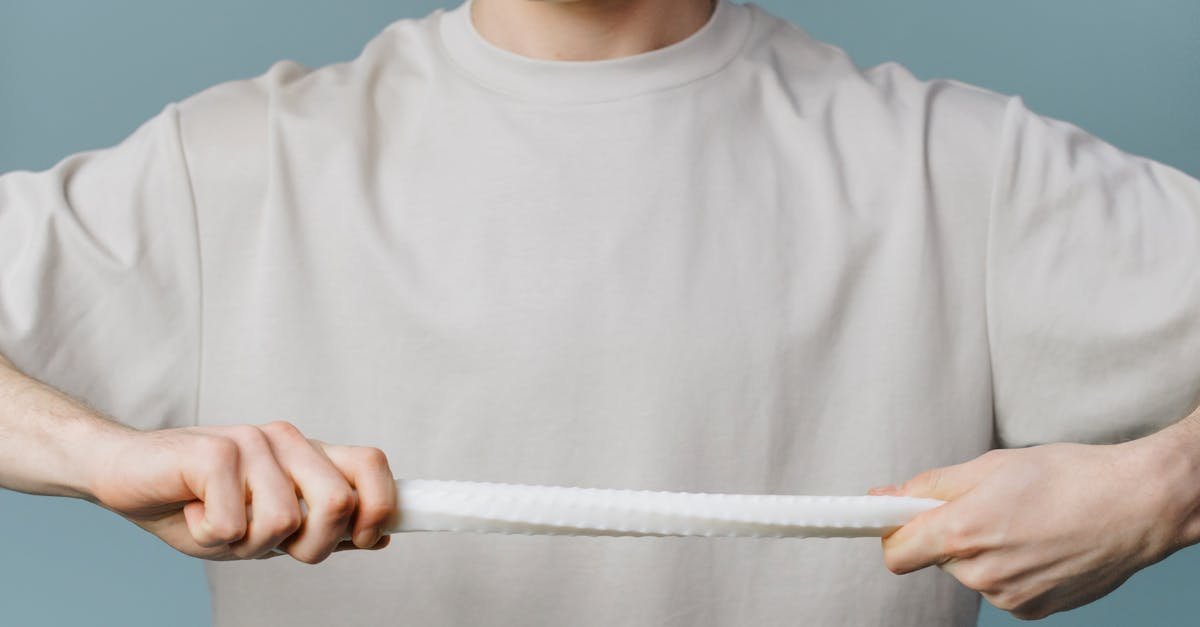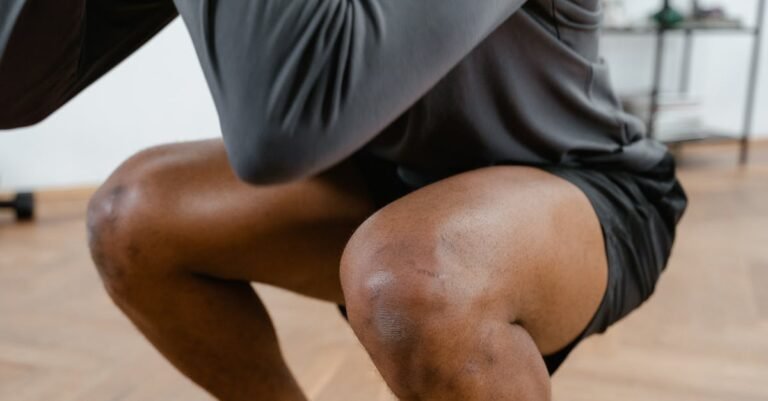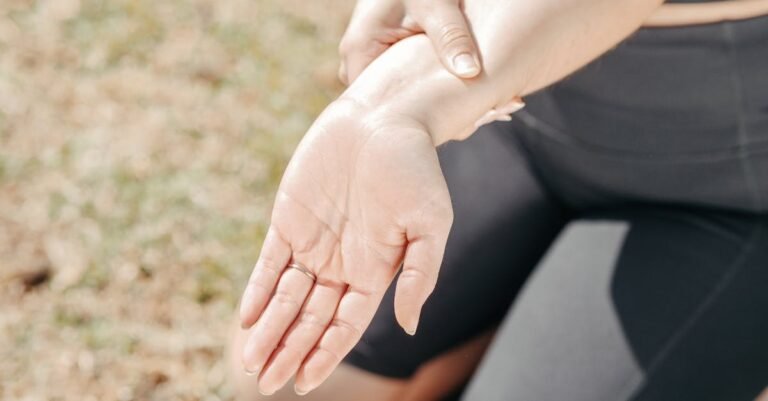Table of Contents
- Improve Grip Strength With Simple Exercises
- Why Bother With Grip Strength Anyway? (The Underrated Superpower)
- Understanding Grip Strength: It’s Not Just One Thing!
- Simple Grip Strengthening Exercises You Can Do Almost Anywhere
- Using Everyday Objects for Grip Gains
- Important Considerations for Your Grip Training
- Wrapping It Up: Your Journey to a Stronger Grip
- Frequently Asked Questions (FAQs)
Improve Grip Strength With Simple Exercises
Ever dropped a grocery bag because your fingers just gave out? Or maybe struggled to open a stubborn jar lid? Felt your hands aching after carrying something heavy for just a short distance? If you nodded along, you’re not alone. Weak grip strength is surprisingly common, but the good news? It’s something you can definitely improve, often with exercises so simple you can do them while watching TV!
Think about it: your hands are your primary tools for interacting with the world. From typing on a keyboard and holding a coffee mug to shaking hands and lifting weights, your grip is constantly at work. Yet, how often do we actively train it? Probably not nearly enough. We focus on big muscles like biceps or quads, but those intricate networks of muscles, tendons, and ligaments in our hands and forearms often get neglected.
This article is your friendly guide to changing that. We’re diving deep into the world of grip strength – why it matters more than you think, the different types of grip, and most importantly, a whole bunch of simple, effective exercises you can start doing today to build a stronger, more capable grip. Forget fancy equipment or complicated routines; we’re keeping it accessible and straightforward. Ready to give your hands the power they deserve?
Why Bother With Grip Strength Anyway? (The Underrated Superpower)
Okay, so maybe “superpower” sounds a bit dramatic, but seriously, having a strong grip offers a surprising number of benefits that ripple through various aspects of your life. It’s easy to overlook, but strengthening your grip is far more than just being able to give a firm handshake (though that’s a nice bonus!).
Everyday Life Benefits
Let’s start with the daily grind. A stronger grip makes mundane tasks significantly easier. Carrying groceries becomes less of a chore. Opening jars stops being a battle of wills. Holding onto railings, using tools (gardening shears, hammers, screwdrivers), even walking your enthusiastic dog – all become less strenuous and more manageable. It boosts your independence, especially as you age. Imagine not needing help with simple tasks just because your hands aren’t strong enough anymore. It’s about maintaining functional fitness for the long haul.
Athletic Performance Boost
If you’re into sports or fitness, grip strength is often the unsung hero. Think about it:
- Weightlifting: Can you deadlift heavy if you can’t hold onto the bar? Nope. Your grip is often the limiting factor in lifts like deadlifts, rows, pull ups, and carries. Stronger grip equals better lifts and more muscle growth potential overall.
- Climbing: This one’s obvious. Your ability to hang on is literally the difference between reaching the top and falling.
- Racquet Sports: Tennis, badminton, squash – a firm grip allows for better control, power, and stability when swinging the racquet.
- Combat Sports: Grappling, martial arts – grip is essential for control, throws, and submissions.
- Ball Sports: Catching, throwing, holding onto a bat or club – grip plays a crucial role.
Basically, any activity that involves holding, catching, throwing, or pulling benefits immensely from a stronger grip. It’s the crucial link connecting your body’s power to the object or opponent you’re interacting with.
Health Indicator? You Bet!
This might surprise you, but research has increasingly shown a correlation between grip strength and overall health. Studies have linked lower grip strength to:
- Increased risk of cardiovascular issues (like heart attack and stroke).
- Higher risk of all cause mortality.
- Potential indicator of overall muscle strength and frailty, especially in older adults.
Now, correlation doesn’t equal causation. Squeezing a stress ball won’t magically prevent a heart attack. But grip strength can be a simple, non invasive indicator of your overall physical condition and resilience. Think of it like a check engine light for your body’s overall robustness.
Understanding Grip Strength: It’s Not Just One Thing!
When we talk about “grip strength,” we’re often simplifying a more complex picture. Your hands can grip things in different ways, and each type utilizes slightly different muscle combinations in your hands and forearms. Understanding these differences helps you target your training more effectively. Let’s break down the main types:
Crush Grip (The Handshake Hero)
This is probably what most people think of as “grip.” It’s the power you exert when you squeeze something firmly within your palm, with your fingers curling around it towards your palm. Think shaking hands, crushing a soda can (please recycle!), squeezing grippers, or holding onto a barbell. This involves the muscles in your fingers and palm, along with powerful forearm muscles like the flexors.
Pinch Grip (Precision Power)
Pinch grip is all about the strength between your thumb and your fingers. You’re not wrapping your whole hand around something; you’re pinching it. Imagine picking up a weight plate by its edge, holding a book by its spine, or tearing a piece of paper. This requires dexterity and strength in the thumb and individual fingers. It’s crucial for tasks requiring fine motor control and holding onto thin objects.
Support Grip (Holding On For Dear Life)
Support grip is about endurance – how long you can hold onto something without your grip failing. Think carrying heavy suitcases, doing pull ups or hanging from a bar, or performing farmer’s walks. While it involves the same muscles as the crush grip, the emphasis here is on isometric endurance – maintaining the contraction over time rather than maximal force. This is heavily reliant on your forearm flexor endurance.
Knowing these types helps you realize that just squeezing a stress ball (primarily crush grip) won’t necessarily improve your ability to hang from a bar (support grip) or pick up thin objects (pinch grip) as effectively. A well rounded grip training program should ideally incorporate exercises that challenge all these aspects.
Simple Grip Strengthening Exercises You Can Do Almost Anywhere
Alright, let’s get to the good stuff! The beauty of grip training is that you don’t need a fancy gym membership or expensive equipment. Many effective exercises use readily available items or just your own bodyweight. Here are some simple yet powerful options:
The Classic Stress Ball Squeeze (Oldie But Goodie)
Yes, the humble stress ball! Often dismissed, it’s a great starting point, especially if your grip is currently quite weak, or for rehabilitation purposes. It primarily targets your crush grip.
How to Do It Right
Don’t just mindlessly squeeze. Place the ball comfortably in your palm. Squeeze it as hard as you can, focusing on contracting all your fingers and your palm muscles. Hold the squeeze for 3 to 5 seconds – feel the tension! Then, slowly release. Repeat this 10 to 15 times for one set. Aim for 2 to 3 sets per hand, maybe 3 times a week initially.
Variations
Stress balls come in different resistances. As you get stronger, progress to a firmer ball. You can also use therapeutic putty, which allows for different types of manipulation and resistance. You can even focus on pinching the ball between your thumb and fingertips for pinch grip work.
Towel Wringing (Kitchen Workout!)
Who knew doing chores could build grip strength? This exercise works your crush grip and also heavily involves your forearm rotators.
Technique Matters
Grab a thick bath towel. Soak it in water (the wetter, the harder it is). Hold it horizontally with both hands, shoulder width apart. Now, twist the towel as if you’re trying to wring every last drop of water out. Twist one hand forward and the other backward, squeezing and rotating with maximum effort. Hold the tension for a few seconds, then reverse the twisting direction. Keep going until your forearms are burning! This is fantastic for building strength through rotation and compression.
Farmer’s Walk (Simple, Brutally Effective)
This is a king of support grip exercises and fantastic for overall conditioning. All you need is something heavy to carry in each hand.
Finding Your Weights
You can use dumbbells, kettlebells, heavy grocery bags, buckets filled with water or sand, or dedicated farmer’s walk handles if you have them. The key is to pick a weight that’s challenging but allows you to maintain good posture (shoulders back, chest up, core tight). Stand tall, grab your weights, and simply walk. Walk for a set distance (e.g., 50 feet) or for time (e.g., 30 to 60 seconds). Your goal is to hold onto those weights without dropping them. As your grip fatigues, you’ll feel those forearms screaming – that’s the stimulus you want! Do several sets.
Plate Pinches (Test Your Fingertips)
Ready to work that pinch grip? This is a fantastic way to do it. You’ll need some weight plates (the smooth kind are harder!).
Start light. Place two small weight plates together, smooth sides facing out. Try to pick them up by pinching them between your thumb and fingers. Hold for as long as you can or walk a short distance. Can’t do two? Start with one plate. As you get stronger, use heavier plates or try pinching three plates together (smooth outer plates, ridged inner plate). This specifically targets the strength in your thumb and fingertips like few other exercises can.
Finger Curls (Often Overlooked)
We often focus on closing the hand, but strengthening the individual finger flexors directly is also beneficial. You can do this with a light dumbbell or even a resistance band.
Sit down and rest your forearm on your thigh, palm facing up, hand hanging off your knee. Hold a light dumbbell with just your fingers. Let the dumbbell roll down towards your fingertips, opening your hand slightly. Then, curl only your fingers back up, bringing the dumbbell back into your palm. Focus on isolating the movement to your fingers. This might feel awkward at first, but it targets those smaller muscles effectively. Do 12 to 15 reps for 2 to 3 sets.
Using Everyday Objects for Grip Gains
Beyond specific exercises, you can integrate grip training into your life using things you already have or can easily modify.
Thick Bar Training (Or a DIY Version)
Training with thicker bars (barbells, dumbbells, pull up bars) makes everything harder to hold onto, forcing your grip and forearms to work overtime. If you don’t have access to specialized thick bars, you can easily simulate the effect. Wrap a small towel, duct tape, or specialized grip adapters (like Fat Gripz) around your regular bars or handles. Suddenly, your usual pull ups, rows, or curls become intense grip challenges. It forces your hand to open wider, increasing muscle activation.
Rice Bucket Digs (Surprisingly Tough)
This is an old school method popular among martial artists and climbers, and it’s incredibly effective for building hand and forearm resilience. Fill a bucket (at least 5 gallon size) about two thirds full with uncooked rice. Now, plunge your hands deep into the rice and perform various movements:
- Open and close your fists forcefully.
- Stab your fingers straight down into the rice.
- Spread your fingers wide against the resistance.
- Rotate your wrists clockwise and counter clockwise, like digging.
- Grab handfuls of rice and squeeze tightly.
Spend a few minutes doing various movements with each hand. The constant resistance in all directions works muscles you didn’t even know you had, including the often neglected extensors (muscles that open the hand).
Important Considerations for Your Grip Training
Before you jump into squeezing, carrying, and pinching with reckless abandon, let’s cover a few crucial points to ensure you train safely and effectively.
Listen to Your Body (No Pain, No Gain… Is Wrong Here)
Grip training, especially when starting, can be taxing on the smaller muscles, tendons, and ligaments in your hands and forearms. Muscle fatigue and a good “burn” are expected, but sharp pain is not. If you feel any joint pain, tendon soreness (especially around the elbows – golfer’s elbow or tennis elbow), or numbness/tingling, back off immediately. Rest, reduce the intensity or frequency, and if the pain persists, consult a healthcare professional. Pushing through sharp pain is a recipe for injury, which will set your progress back significantly.
Consistency is Key
Like any form of strength training, you won’t develop a crushing grip overnight. You need to be consistent. Aim to incorporate grip exercises into your routine 2 to 3 times per week. You can dedicate specific time slots or tack them onto the end of your regular workouts. A few minutes several times a week is far more effective than one marathon grip session that leaves you unable to open a door for days. Progress gradually – increase resistance, duration, or reps as you get stronger.
Don’t Forget the Forearms!
Remember, grip strength isn’t just about the hands; your forearm muscles are major players. Many grip exercises inherently work the forearms (like farmer’s walks or towel wrings). However, ensure you’re also considering exercises that specifically target forearm flexion (like wrist curls) and extension (reverse wrist curls). Also, don’t neglect the muscles that open your hand (extensors). The rice bucket is great for this, or you can use simple rubber bands looped around your fingertips and spread your fingers against the resistance. Balancing the muscles that close your hand with those that open it helps prevent imbalances and potential injuries like elbow tendonitis.
Wrapping It Up: Your Journey to a Stronger Grip
So there you have it! Improving your grip strength isn’t some mythical quest requiring ancient secrets or expensive gadgets. It boils down to understanding the ‘why,’ recognizing the different ‘types’ of grip, and consistently applying simple, targeted exercises. Whether you start squeezing a stress ball, wringing out towels, carrying heavy things, or digging in a rice bucket, the key is to begin.
Think of your hands like any other muscle group – they respond to training. By incorporating these exercises into your routine, you’ll not only find everyday tasks easier but potentially boost your athletic performance and even gain an insight into your overall health. It’s a small investment of time for a significant return in functional strength and capability.
Don’t underestimate the power hidden in your hands. Start simple, stay consistent, listen to your body, and enjoy the feeling of confidence that comes with a truly strong grip. Go ahead, give that stubborn jar a run for its money!
Frequently Asked Questions (FAQs)
1. How long does it take to see improvements in grip strength?
It varies depending on your starting point, consistency, and the intensity of your training, but many people start noticing improvements in functional grip (like carrying groceries) within a few weeks of consistent training (2 to 3 times per week). Significant strength gains might take a few months. Patience and consistency are crucial!
2. Can I train my grip every day?
It’s generally not recommended to train grip intensely every single day. Your muscles and connective tissues need time to recover and rebuild, just like any other muscle group. Overtraining can lead to fatigue, stalled progress, or injury (like tendonitis). Aim for 2 to 4 sessions per week, allowing at least a day of rest in between intense sessions. Lighter activities like stress ball squeezes might be okay more frequently, but listen to your body.
3. Do I need to buy special grip strengtheners?
No, you don’t need them, especially when starting. As we’ve covered, many effective exercises use towels, weights you might already have, plates, buckets of rice, or even just bodyweight (like hangs). However, adjustable hand grippers or therapeutic putty can be useful tools for structured progression and targeting crush grip specifically once you’ve built a foundation.
4. Will grip exercises make my hands or forearms bulky?
While consistent grip training will strengthen and potentially increase the size of your forearm muscles, significant ‘bulk’ is unlikely unless you’re genetically predisposed and training with very high volume and intensity, often combined with specific bodybuilding goals. For most people, grip training leads to denser, stronger muscles and improved definition rather than massive size increases.
5. My wrists hurt sometimes when I do grip exercises. What should I do?
Wrist pain during grip exercises could stem from several issues: poor form, trying too much weight too soon, an underlying wrist issue, or muscle imbalances. Stop the exercise causing pain immediately. Check your form – ensure your wrist is in a neutral or stable position, not bent awkwardly. Reduce the weight or resistance. If the pain persists, rest the wrist and consider consulting a doctor or physical therapist to diagnose the issue and get appropriate guidance.










